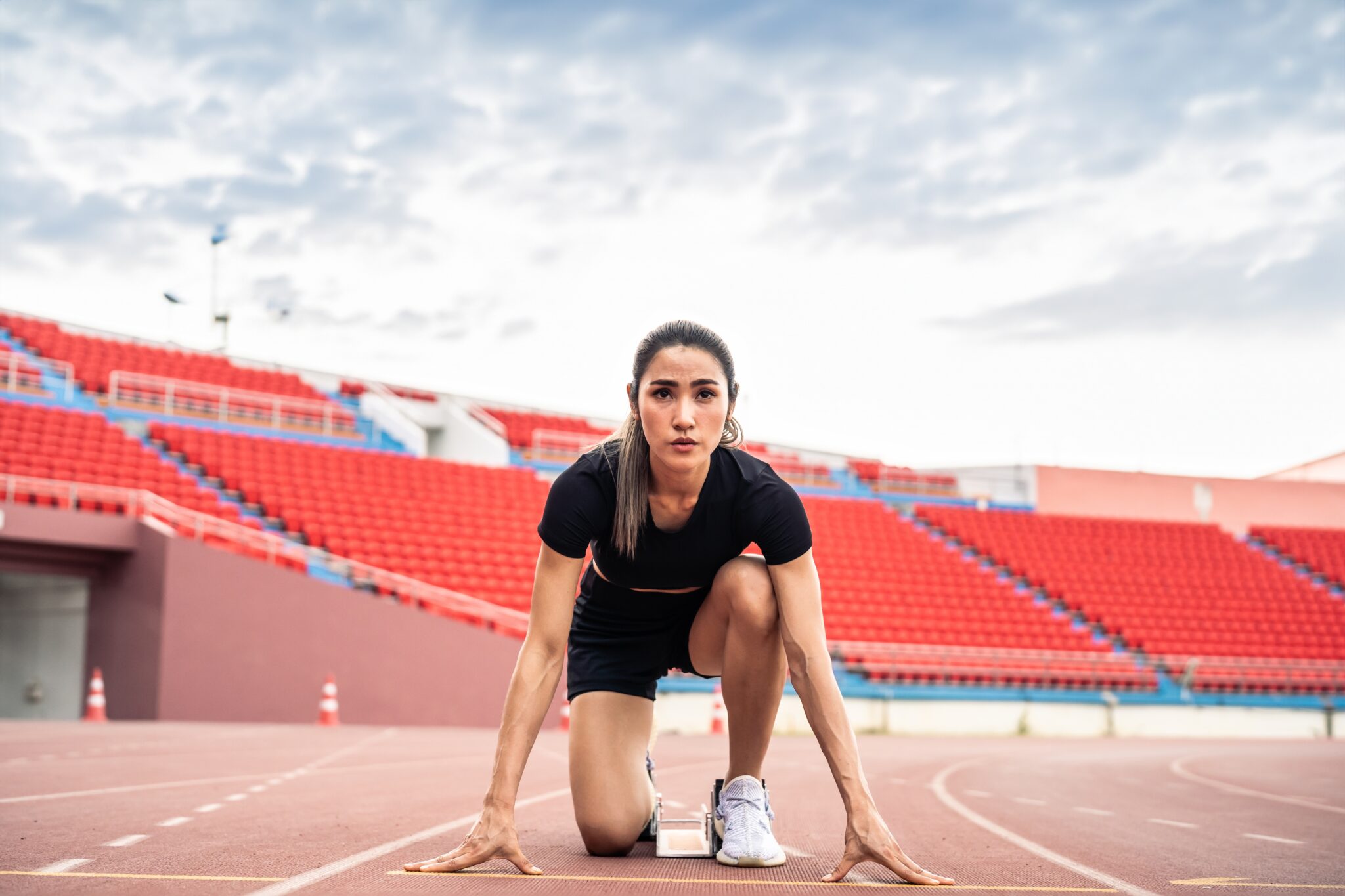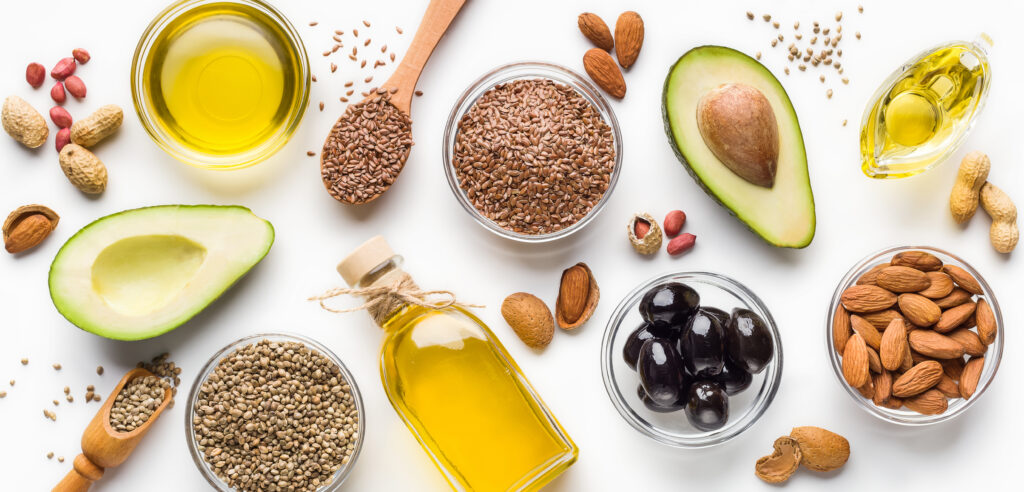Amy Stephens
MS, RDN, CSSD, CEDS
Licensed dietitian
specializing in sports nutrition
and eating disorders
MS, RDN, CSSD, CEDS
Licensed dietitian
specializing in sports nutrition
and eating disorders

Athletes burn tons of extra calories each day because of the high demands of their training. If their nutritional needs are not being met, they may be underfueling. For female athletes, underfueling poses a high risk for secondary amenorrhea, which is defined as the absence of three or more periods in a row by someone who has had periods in the past. It can lead to a variety of other health issues, specifically impacting bone health and lowering immunity. Unfortunately, secondary amenorrhea is extremely common in female runners. The good news is, it is possible for an athlete to regain their menstrual cycle and potentially reverse the effects caused by secondary amenorrhea. But how?
The short answer is simple: exercise less, and eat more.
The long answer is that it isn’t so simple for athletes. Many athletes may feel that they have no chance at regaining their menstrual cycle, because their lifestyle directly goes against the baseline rule of exercising less and eating more to restore their period. Additionally, some athletes may fear weight gain despite the fact that it may be necessary for them to restore their cycle. However, secondary amenorrhea is reversible, and here are 5 ways in which an athlete can make small changes in order to restore their period:
4. Increasing Healthy Fats – Healthy fats supply the building blocks for female hormone production in the body. Increasing healthy fats when in secondary amenorrhea recovery supports the production of estrogen, progesterone, and healthy brain tissue. Healthy fats also support overall nutrient absorption, so consuming healthy fats allows your body to make the most out of all the other food you eat, ensuring that you are absorbing all the nutrients you need. Some easy ways to increase healthy fats can be from foods like full fat dairy products, avocados, fish, nuts and nut butters, seeds, and cooking with olive oil.

5. Necessary Weight Gain and Increasing Body Fat – It is a common misconception among runners and other athletes that being thinner will improve performance. This is not true, and in fact having a body fat percentage that is too low can be dangerous. For menstrual health, body fat is crucial. Women that have a low BMI (body mass index) are producing less estrogen, which can lead to secondary amenorrhea. While everybody is different, and using BMI may not be an accurate representation of what is healthy versus what is not, if an athlete has a low BMI as a result of extremely demanding training as well as a calorie deficit, it is not healthy. This is especially the case if they suffer from secondary amenorrhea. If you have lost your menstrual cycle, even if you are not necessarily “underweight” as understood by the BMI scale, you may be at an unhealthy bodyweight for YOU. Gaining some essential body fat will support hormone health by aiding the production of estrogen, allowing your body to regain its menstrual cycle.
6. Shift away from the diet mindset – Deliberately limiting your food or food intake with the aim of losing weight can lead to changes in your metabolism and hormone balance. Ensure that you eating enough to sustain your physical activity and promote recovery. Seek guidance from a sports dietitian expert to accurately assess your nutrition requirements and create a well-balanced meal plan.
7. Pay attention to your body’s hunger cues – Feeling hungry is a sign that your body needs food. By ignoring hunger cues, your body’s natural rythms can become imbalanced. When you feel hungry, opt for a nutritious meal or snack to address your body’s needs.
In addition to misinformation regarding the effects and severity of amenorrhea in athletes, it is also common for people to believe that going on birth control will fix these issues. While the birth control pill can produce a “period” it’s actually a withdrawal bleed. It’s not a natural period where your body has enough nutrients to produce hormones. A withdrawal bleed is not a real period and it doesn’t indicate you are in calorie balance.
Your physician may suggest that, as an athlete, it’s ok to miss your period. As mentioned, losing a period is not healthy and indicates an imbalance with nutrition and exercise that requires attention. Prolonged amenorrhea can have long-term effects on bone health.
Ultimately, there is no formula for restoring your period. Everybody is different, and some methods may work better than others. Additionally, some people may regain their periods faster than others, but this does not mean that you should stop trying. Small changes over time build up, and eventually by using these tips you can restore your period and continue becoming the strongest and healthiest athlete you can be.
Reach out to an informed physician or sports dietitian who can provide additional guidance about restoring your cycle.
References
Cialdella-Kam, L.; Guebels, C.P.; Maddalozzo, G.F.; Manore, M.M. Dietary Intervention Restored Menses in Female Athletes with Exercise-Associated Menstrual Dysfunction with Limited Impact on Bone and Muscle Health. Nutrients 2014, 6, 3018-3039.
De Souza MJ, Mallinson RJ, Strock NCA, Koltun KJ, Olmsted MP, Ricker EA, Scheid JL, Allaway HC, Mallinson DJ, Kuruppumullage Don P, Williams NI. Randomised controlled trial of the effects of increased energy intake on menstrual recovery in exercising women with menstrual disturbances: the ‘REFUEL’ study. Hum Reprod. 2021 Jul 19;36(8):2285-2297.
Hackney AC. Menstrual Cycle Hormonal Changes and Energy Substrate Metabolism in Exercising Women: A Perspective. Int J Environ Res Public Health. 2021 Sep 24;18(19):10024.
Ihalainen JK, Kettunen O, McGawley K, Solli GS, Hackney AC, Mero AA, Kyröläinen H. Body Composition, Energy Availability, Training, and Menstrual Status in Female Runners. Int J Sports Physiol Perform. 2021 Jul 1;16(7):1043-1048.
Licensed Dietitian Specializing in sports nutrition and eating disorders
© Amy Stephens Nutrition
Website by Second Language